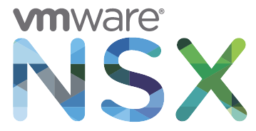Ontrak Data Center Virtualization (VMware)-20Hrs
Overview

Pre-Requisites
- - Basic knowledge of Switching required
- Basic knowledge of Switching required
+ Section 1: Explain Data Center Virtualization Concepts and Identify Typical Data Center Challenges + Objective 1.1: Identify and Explain the Concept of Data Center Virtualization Knowledge
- Explain Data Center Virtualization.
- Differentiate Physical and Virtual Data Center Components.
- Identify Data Center Virtualization Benefits.
+ Objective 1.2: Identify Challenges that can be resolved with VMware vSphere with Operations Management Knowledge
- Identify VMware vSphere Editions.
- Identify common management challenges.
- Identify common scalability challenges.
- Identify common optimization challenges.
+ Section 2: Identify, Explain and Differentiate VMware vSphere Technologies +Objective 2.1: Describe how the components of VMware vSphere support Data Center Virtualization Knowledge
- Explain the concept and capabilities of virtual machines and vApps.
- Explain the concept and capabilities of a virtual machine.
- Identify purpose of ESXi and vCenter Server.
- Differentiate VMware migration technologies.
- Differentiate VMware availability technologies.
- Explain the concepts of clusters and resource pools.
- Identify and explain common VMware data center products.
+Objective 2.2: Differentiate VMware vSphere Storage Technologies Knowledge
- Differentiate physical and virtual storage.
- Explain the use of shared storage in a vSphere implementation.
- Differentiate VMFS and NFS datastores.
- Differentiate virtual disk provisioning methods.
- Explain Virtual SAN capabilities.
- Explain Virtual Volume capabilities.
- Identify capabilities of Storage I/O Control.
- Identify capabilities of Storage DRS.
- Explain VMware virtual storage technologies.
+Objective 2.3: Differentiate VMware vSphere Networking Technologies Knowledge
- Differentiate physical and virtual networking.
- Differentiate VMware virtual switch technologies.
- Identify VMware virtual switch components.
- Identify common virtual switch policies.
- Identify capabilities of Network I/O Control.
- Differentiate traffic control mechanisms.
+Objective 2.4:Differentiate VMware vSphere Resource Management Technologies Knowledge
- Differentiate vSphere resource management features.
- Remediate resource management challenges.
- Identify all vMotion technologies (Storage, Resource, Long distance, etc.).
- Explain Distributed Resource Management, Distributed Power Management and High Availability.
+Objective 2.5: Differentiate VMware vSphere Availability Technologies Knowledge
- Differentiate vSphere high availability features.
- Remediate high availability challenges.
- Identify vSphere Disaster Recovery solutions.
- Differentiate VMware disaster recovery/disaster tolerance technologies.
- Explain vSphere Fault Tolerance.
- Identify vSphere Replication requirements.
+ Section 3: Perform Operational Tasks using the vSphere Web Client + Objective 3.1: Identify and Understand Virtual Infrastructure Object Status Knowledge
- Identify different virtual infrastructure objects within the vSphere Web Client.
- Differentiate visual status indicators for various object states and conditions.
- Describe actions that can be taken on objects given a specific state of condition.
+ Objective 3.2: Understand Hierarchy and Inventory Objects within the vSphere Web Client Knowledge
- Differentiate the functions of the vSphere Web Client panes.
- Describe vSphere Web Client Navigation, Filter and Search options.
- Describe the Access Control system.
- Understand how roles and/or permissions are assigned.
- Understand virtual machine file and inventory structure and mechanisms.
- Understand the benefit of tags assigned to inventory objects.
+ Objective 3.3: Monitor Virtual Machine and ESXi Host Status Knowledge
- Install the Client Integration Plug-in.
- Install the VMware Remote Console.
- Install and/or Upgrade VMware Tools.
- Understand and differentiate virtual machine performance charts.
- Monitor Virtual Machine CPU/Memory/Disk utilization.
- Monitor ESXi Host health status.
- Monitor ESXi Host and virtual machine tasks.
- Monitor ESXi Host and virtual machine events.
- Monitor ESXi Host and virtual machine alarms.
+ Objective 3.4: Perform Virtual Machine Operations Knowledge
- Differentiate the power states of a virtual machine.
- Configure startup options for virtual machines running on a host.
- Manage the power operations of a virtual machine.
- Manage the power operations of a vApp.
- Install a guest OS to an existing virtual machine.
- Manage removable media.
Duration : 15-20hours Price: Rs 10k

